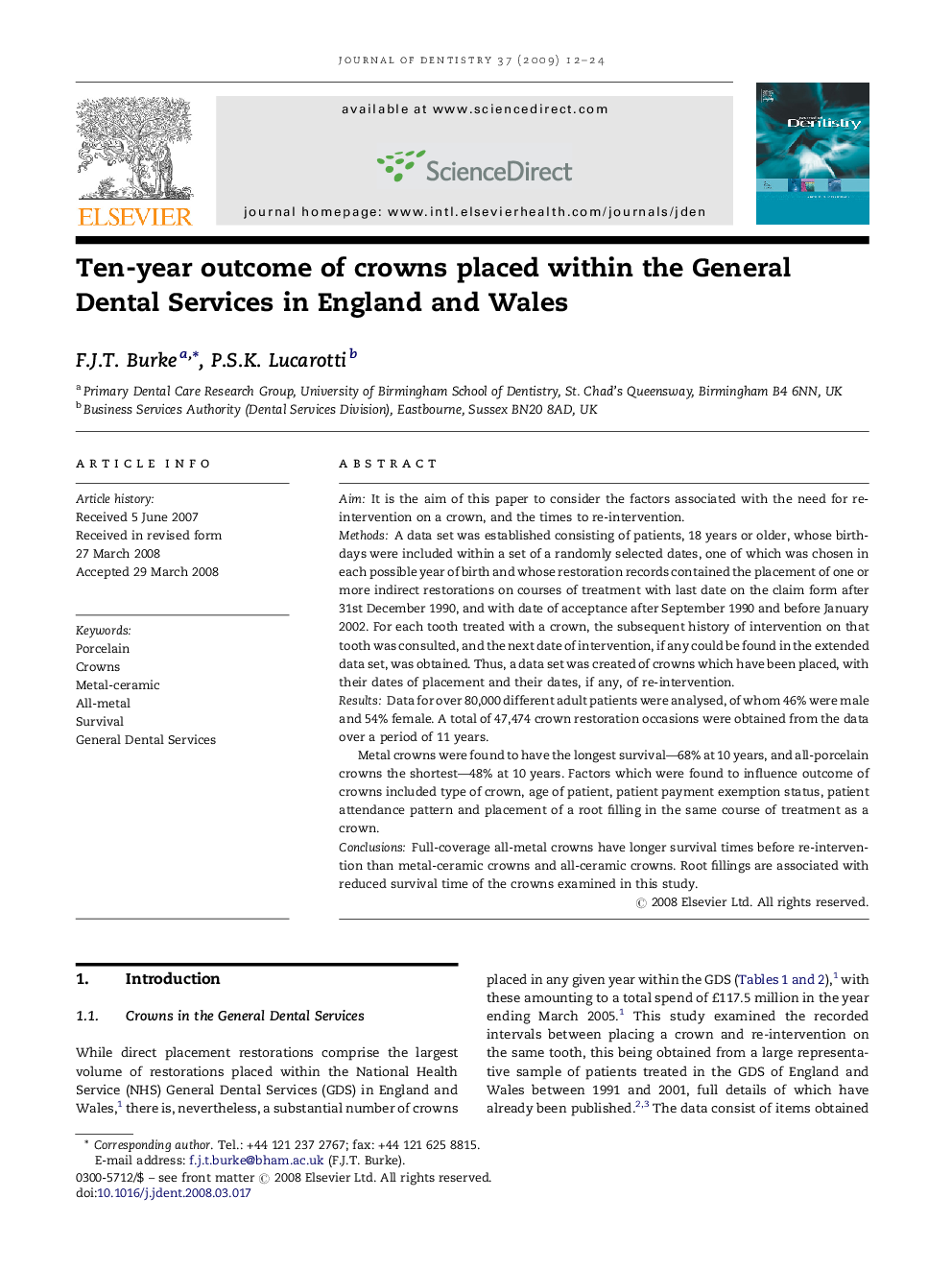| Article ID | Journal | Published Year | Pages | File Type |
|---|---|---|---|---|
| 3145392 | Journal of Dentistry | 2009 | 13 Pages |
AimIt is the aim of this paper to consider the factors associated with the need for re-intervention on a crown, and the times to re-intervention.MethodsA data set was established consisting of patients, 18 years or older, whose birthdays were included within a set of a randomly selected dates, one of which was chosen in each possible year of birth and whose restoration records contained the placement of one or more indirect restorations on courses of treatment with last date on the claim form after 31st December 1990, and with date of acceptance after September 1990 and before January 2002. For each tooth treated with a crown, the subsequent history of intervention on that tooth was consulted, and the next date of intervention, if any could be found in the extended data set, was obtained. Thus, a data set was created of crowns which have been placed, with their dates of placement and their dates, if any, of re-intervention.ResultsData for over 80,000 different adult patients were analysed, of whom 46% were male and 54% female. A total of 47,474 crown restoration occasions were obtained from the data over a period of 11 years.Metal crowns were found to have the longest survival—68% at 10 years, and all-porcelain crowns the shortest—48% at 10 years. Factors which were found to influence outcome of crowns included type of crown, age of patient, patient payment exemption status, patient attendance pattern and placement of a root filling in the same course of treatment as a crown.ConclusionsFull-coverage all-metal crowns have longer survival times before re-intervention than metal-ceramic crowns and all-ceramic crowns. Root fillings are associated with reduced survival time of the crowns examined in this study.
